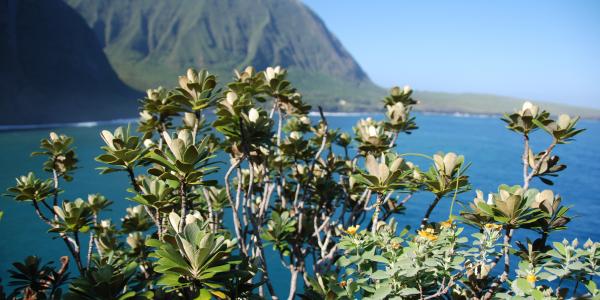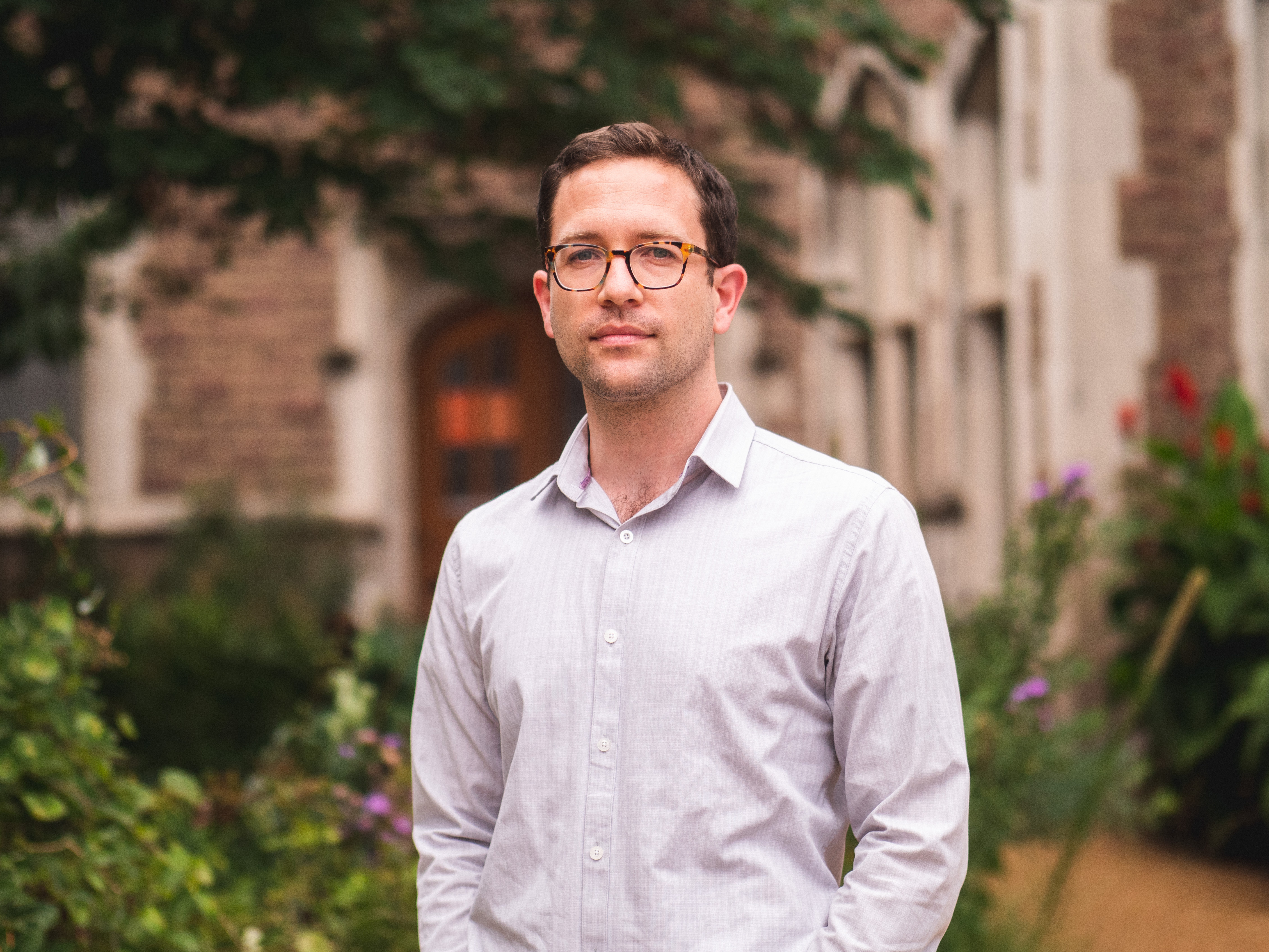Scientists in the fields of botany, computational biology, and genomics come together to investigate the relationship between lineage diversification and geographical changes over time
As a biogeographer, Assistant Professor Michael Landis is fascinated with island systems because they serve as natural test beds for evolutionary experiments. The Hawaiian Islands are some of the most isolated on the planet, with the Big Island being about 2,000 miles away from any major continent. The islands form an archipelago stretching from the Big Island in the south to the Kamchatka Peninsula of Russia, where Alaska and Russia interface, in the north.
Over millions of years, each island in this archipelago was born into the chain through a volcanic hotspot, then slowly ferried to the northwest by tectonic drift atop the Pacific Plate, much like a conveyor belt, creating a stepping stone pattern across the Pacific Ocean. These geographical features are believed to be the reason Hawaii is home to thousands of species found nowhere else. This island formation pattern, along with the extreme isolation of Hawaii and incredible amount of plant biodiversity there, make the islands a fruitful system to investigate how evolutionary processes behave.
The NSF grant and research team
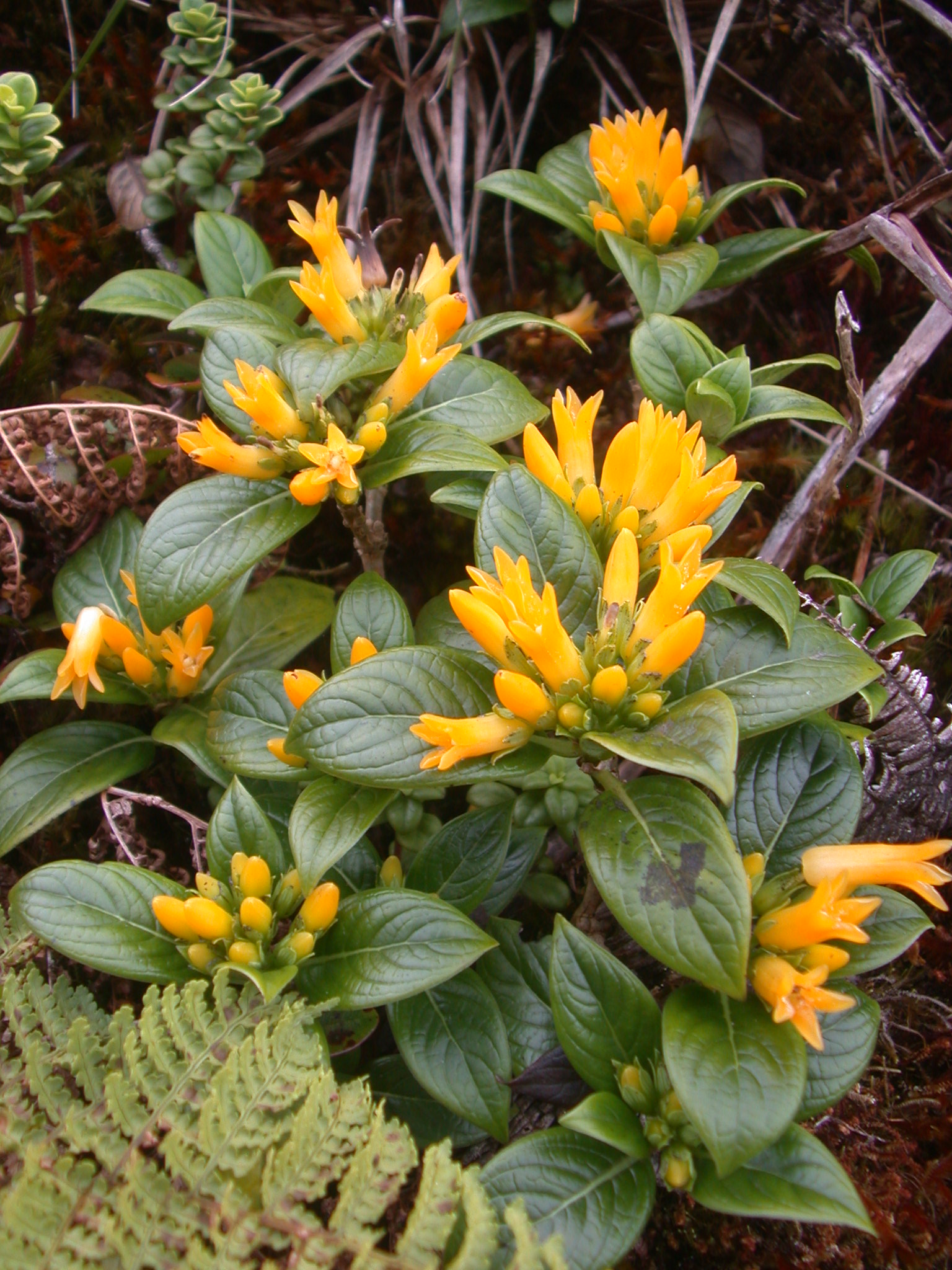
(Photo: Ken Wood)
The Landis lab, in collaboration with scientists from four other institutions, received a grant totaling $1.12M from the NSF for a project titled “Modeling the Origin and Evolution of Hawaiian Plants.” The research team will investigate 12 independent radiations of flowering plants in the Hawaiian Island system.
Alongside Landis, who focuses on computational problems and statistical analysis, is Dr. Felipe Zapata, an expert in botany, bioinformatics, and sequencing technologies from UCLA, and three world class botanists that specialize in Hawaiian biodiversity: Dr. Nina Rønsted, Director of Science and Conservation at the National Tropical Botanical Garden in Kauai, one of the premier institutions studying tropical plant diversity in the United States; Dr. Warren Wagner, Curator of Botany at the Smithsonian Natural History Museum, who completed his PhD at WashU; and Dr. Bruce Baldwin, Curator of the Jepson Herbarium and Professor at UC Berkeley.
The five of them will reconstruct the relationships and ages of the different plant species, unravel how the species radiated throughout the archipelago, and determine to what extent the “conveyor belt” dynamics of Hawaiian paleogeography fueled these island radiations.
The origins of the project
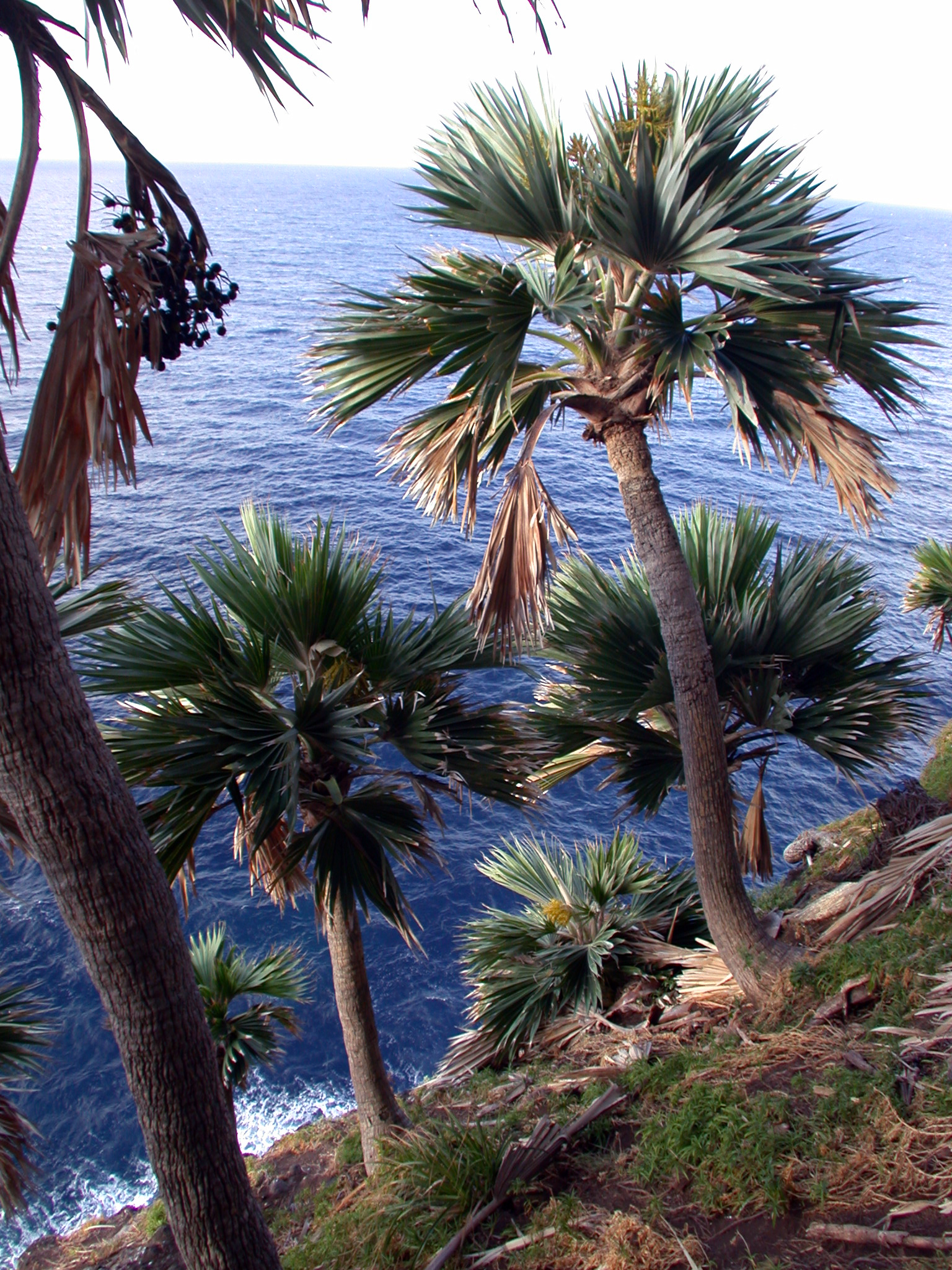
(Photo: Ken Wood)
One of the enduring questions in biology is: what drives the diversification of species? Thousands upon thousands of years are generally needed for new species to originate, meaning the complete process of speciation cannot be witnessed in its entirety by scientists. But the process can be reconstructed mathematically. To this end, researchers design and employ statistical models to infer how species diversified over deep timescales.
While biologists predict that paleogeographical dynamics play an important role in the formation of new species, simple diversification models are blind to those dynamics. For example, a naive model might incorrectly allow for a species to diversify upon an island before the island rose above sea level. This project aims to design new probabilistic models and inference methods to address this gap, and improve how we understand species diversification.
Although Hawaiian plants were quickly identified as an excellent system to study this relationship between diversification and geography, it became apparent that the project could also serve as a vehicle for new botanical discoveries. Although most Hawaiian plant species are known to science in some capacity, relatively few radiations have received the attention they deserve in the past thirty years. The research team intends to focus on 12 understudied groups – including Kadua, Wikstroemia, and Psychotria – using new sequencing and modeling techniques to gain a broader idea of how Hawaiian plant diversity originated.
New technology
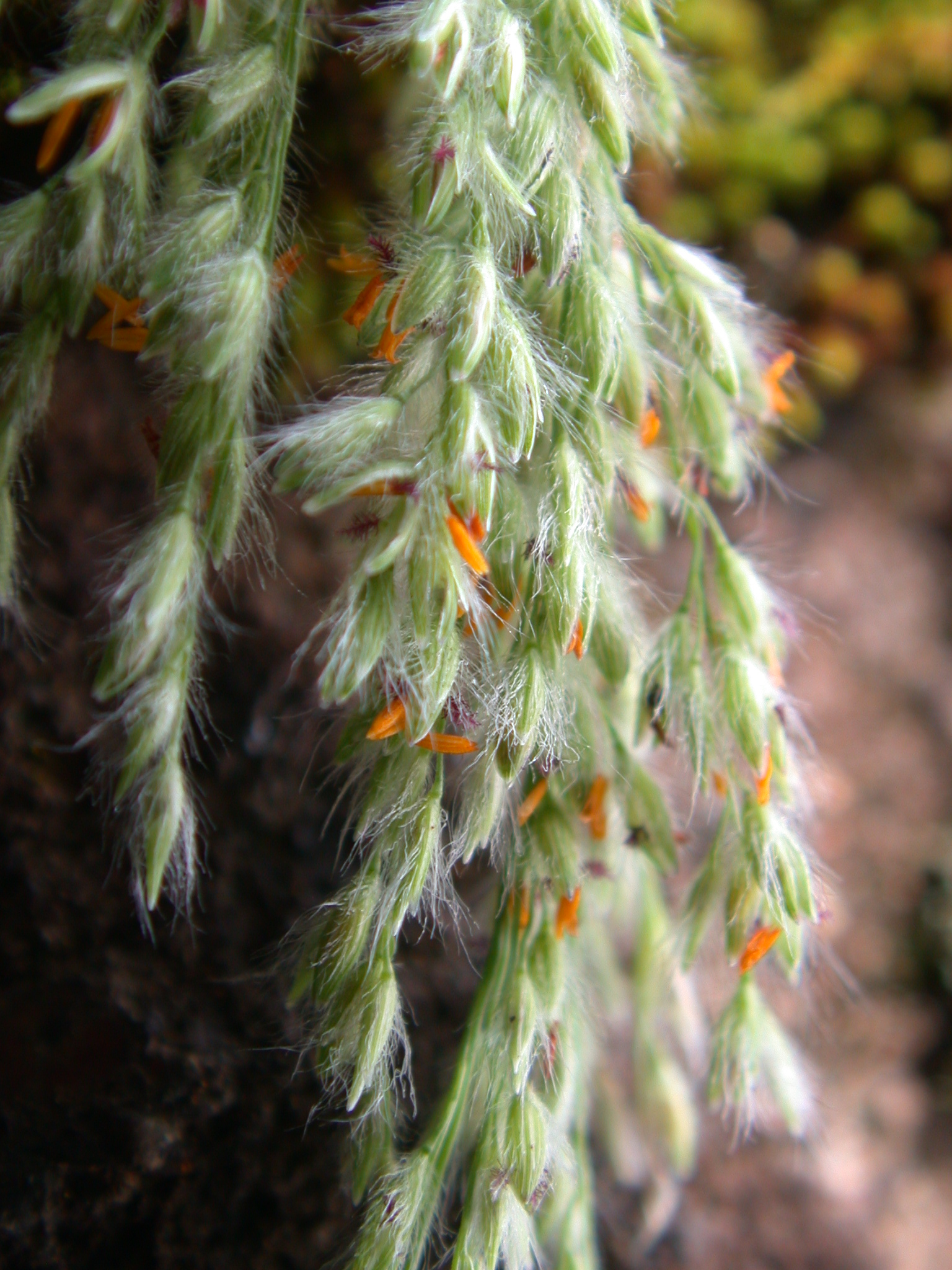
(Photo: Ken Wood)
Forty years ago, to understand how species were related to each other, one would typically sample a single individual from a species, extract a single gene from that individual, then compare the DNA sequence for that gene against similar genes from other species to infer how the species are related to each other. This general approach is known as molecular phylogenetics. Newly developed technologies now allow one to sequence hundreds or even thousands of genes across multiple species with relatively little effort, revolutionizing how people infer molecular phylogenies.
The technology this team will use was introduced for widespread use only two years ago. It’s called Angiosperm-353, named after the 353 highly conserved genes or loci targeted by the sequencing protocol. That’s one half of it. The other half is on the statistical side, which is what Landis is focusing on.
“We will make use of newer statistical and computational methods that my group develops, which will allow us to estimate how closely species are related to one another, when and where new species originated, and when and how species moved between different islands. The methods will be able to tell us to what degree paleogeographic features -- such as interisland distances or differences in altitude -- influence how rapidly species split into two lineages, how rapidly they go extinct, or how rapidly they disperse. These methods will bud off of a new framework for modeling lineage diversification that has gained traction in the past decade. The Hawaiian flora is perfect to showcase how these models can produce new insights into how biodiversity is generated, maintained, and lost. Those two parts working together, the empirical part and the theoretical part, is what makes this project especially exciting for all of us,” Landis explained.
Conservation applications
(Photo: Ken Wood)
Although Hawaii is home to nearly 1,000 plant species found only on the islands, many of those species are endangered. Conservation efforts, such as those enforced through the Endangered Species Act, are most effective when target species are accurately identified and actively monitored. The research team will be collecting new plants from 12 genera of endemic Hawaiian species that have been historically understudied. The collected specimens will be deposited in the National Tropical Botanical Garden’s herbarium.
Botanical records like these are invaluable for conservation because they allow future scientists to review how natural populations have changed over time, in terms of genetics, morphology, and ecology. By sequencing new genomic data for those plants, along with hundreds of other plant specimens previously collected by the Smithsonian and the National Tropical Botanical Garden, they expect to revise the taxonomy of the species for these genera. These data will shed light on the degree to which different plant species are threatened based on where they live, how many individuals they find in populations, and potentially whether some island populations in fact represent new and distinct species. The three experts on Hawaiian botany (Rønsted, Wagner and Baldwin) are especially excited about this endeavor because it could have major implications for conservation efforts throughout the islands.
Education
Two components in this project focus directly on education. The first piece will produce a set of teaching modules, made freely available for public use, for undergraduate classrooms to show how biodiversity research benefits from integrative perspectives drawn from multiple fields. The modules will include guided reading assignments, writing exercises, and small computational examples to illustrate why certain principles exist.
“If you want to understand the forces that generated Hawaiian plant diversity, that kind of complex phenomenon can’t be explained by plant morphology and adaptation alone. It can’t be explained through genomic data and molecular phylogenetics alone. It can’t be explained through statistical models of biogeography alone. It can’t be explained by paleogeographical dynamics alone. Explaining the phenomenon requires students to synthesize insights from these different disciplines.
Each module will survey a different topic and expand upon the basic principles involved in the relevant insights; for example, how tectonic drift and oceanic volcanism produced the ‘stepping stone’ pattern that’s so apparent in the Hawaiian island system. For example, it’s remarkable to consider that tectonic drift was only validated and accepted scientifically in the 1970s. And forty years ago, we didn’t have the statistical tools to accurately infer relationships between species from gene sequences. We’re hoping to show that biodiversity research is fundamentally interdisciplinary work, carried out by groups of experts where everybody really cares about their piece of the puzzle,” Landis said.
The second part of the educational component is a series of computational workshops to train scientists who are interested in phylogenetics and biogeography. Workshops like these are especially valuable to scholars who typically do not have local access to expertise or training in specialized areas of research. Central to the design of the workshop is that all educational materials will be made freely available online. The hope is to build a community around the general theme of biogeography that allows students to bring that knowledge back to their home institutions. The workshops are geared toward graduate students and postdocs primarily, but the goal is to reach anyone that can make use of this material.
“When you make these scientific materials freely available online, the teacher steps aside as the goalkeeper to an education. Anybody who can access the material has the opportunity to learn independently. That’s how I see scientific education in general. That’s the direction it has to go. If you believe in science being about communicating ideas and being transparent about why you think something is the way it is, part of that is making that message as broadly available as possible. This is a public research grant, so I feel like it’s wholly appropriate to produce freely available educational materials as a concrete way to deliver on the investment in science made by the public,” Landis explained.
To learn more about Michael Landis and his research lab, check out http://landislab.org/.

